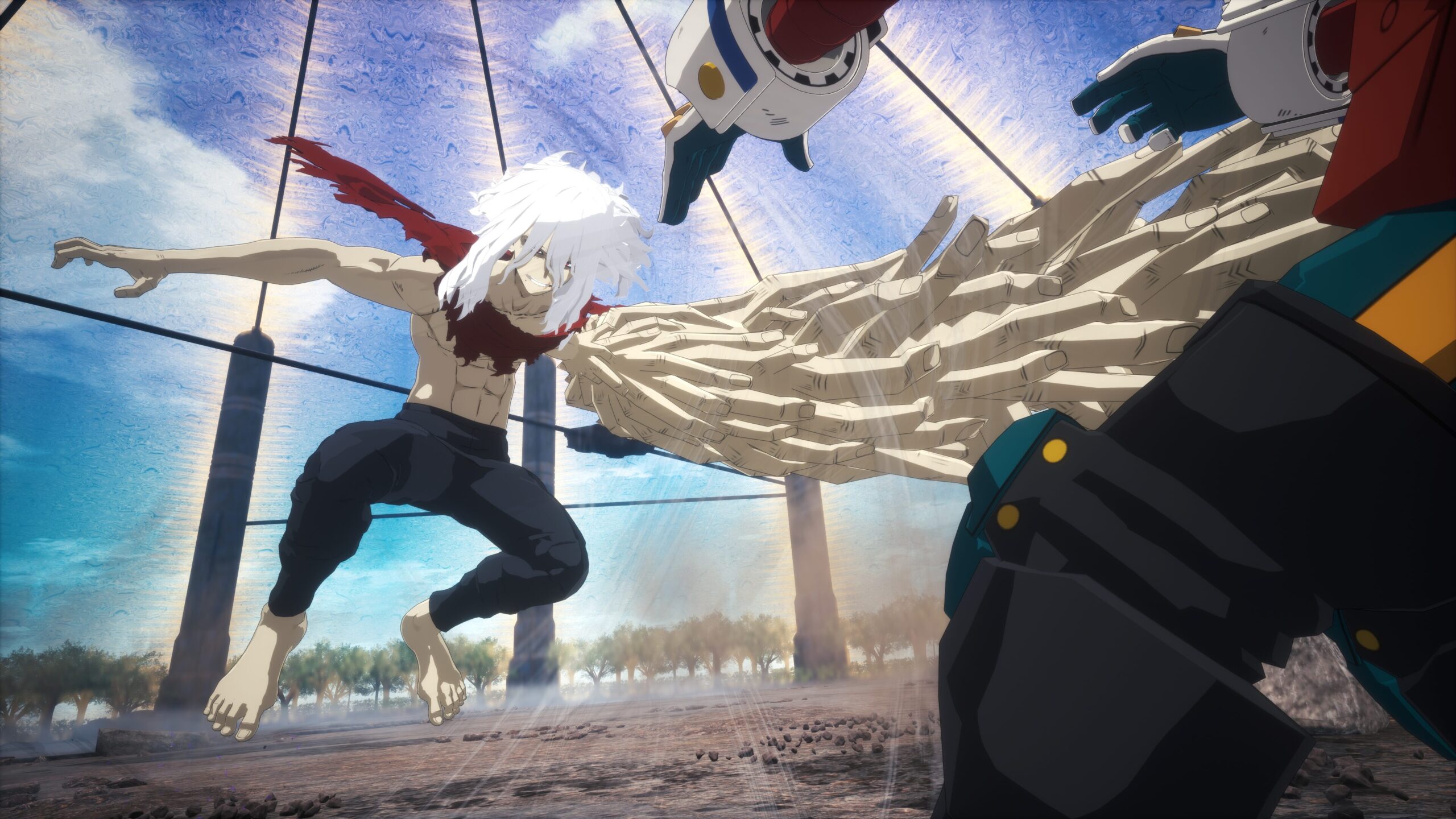After I played My Hero Academia: All’s Justice it’s pretty clear that it’s not just another arena fighter in Bandai Namco’s long list of anime adaptations, but because this one feels different. This isn’t a quick spin-off or a safe sequel, it’s the game that dares to tackle the final war arc of Deku’s story.
Faster, tighter, more dangerous
The very first thing that struck me was the speed. The previous One’s Justice games always looked spectacular, but they could feel a bit floaty. Here, attacks snap into place with a punchy rhythm. Bakugo’s explosions rattle through the arena with a sense of weight, while Todoroki’s icy walls and fiery bursts transform the battlefield into something alive. Every quirk feels tuned, dangerous, and most importantly, responsive.
The 3v3 structure is the big new hook. Instead of picking a single fighter and a support, you now control a full squad, switching between them seamlessly mid-combo. It completely changes the pace. There’s a tactical edge in deciding who to bring in, but it never slows down, if anything, it amplifies the chaos. One second you’re cornered as Deku, the next you tag in another character for an aerial juggle, and suddenly the fight is yours again. It’s flashy, it’s risky, and it keeps you engaged in every moment.
“Another brand-new mechanic is the Rising System, which gives a stat boost—more attack, speed, and recovery; once your gauge is full. It automatically activates if you’re down to your last fighter, but it can also be triggered sooner if you’ve built up the gauge in the fight. It’s not just a lazy comeback button, it’s a thematic choice. In the anime, the stakes always rise when someone’s on their last legs, and that emotion carries through here. Pulling off a win in Rising felt exhilarating, like you’re living that “one last push” moment straight out of the series.
Roster depth and personality
Bandai Namco hasn’t fully lifted the curtain on the complete roster yet, but what I played gave me confidence. Characters aren’t just reskinned archetypes, they’re fully realized, with unique quirks shaping not only their moves but also their pacing. Bakugo is aggressive, relentless, while others excel at zoning and forcing reactions. Even within the same 3v3 team, the differences in tempo make for wild shifts in momentum.
It’s easy to imagine just how much depth this system will unlock once the full roster is revealed. If, as hinted, the entire Class 1-A is playable alongside Pro Heroes and Villains, we’re looking at one of the most diverse line-ups in an anime fighter to date.
Early conclusion:
Walking away from the demo, I didn’t feel like I’d just played another anime arena fighter. I felt like I’d been handed the controller to My Hero Academia’s climax, with a system designed to match its intensity. The 3v3 mechanic is a game-changer, the Rising System nails the shōnen spirit, and the roster promises depth without losing accessibility. All’s Justice is shaping up to be more than fan service. It’s an explosive, stylish retelling of Deku’s final struggle.



